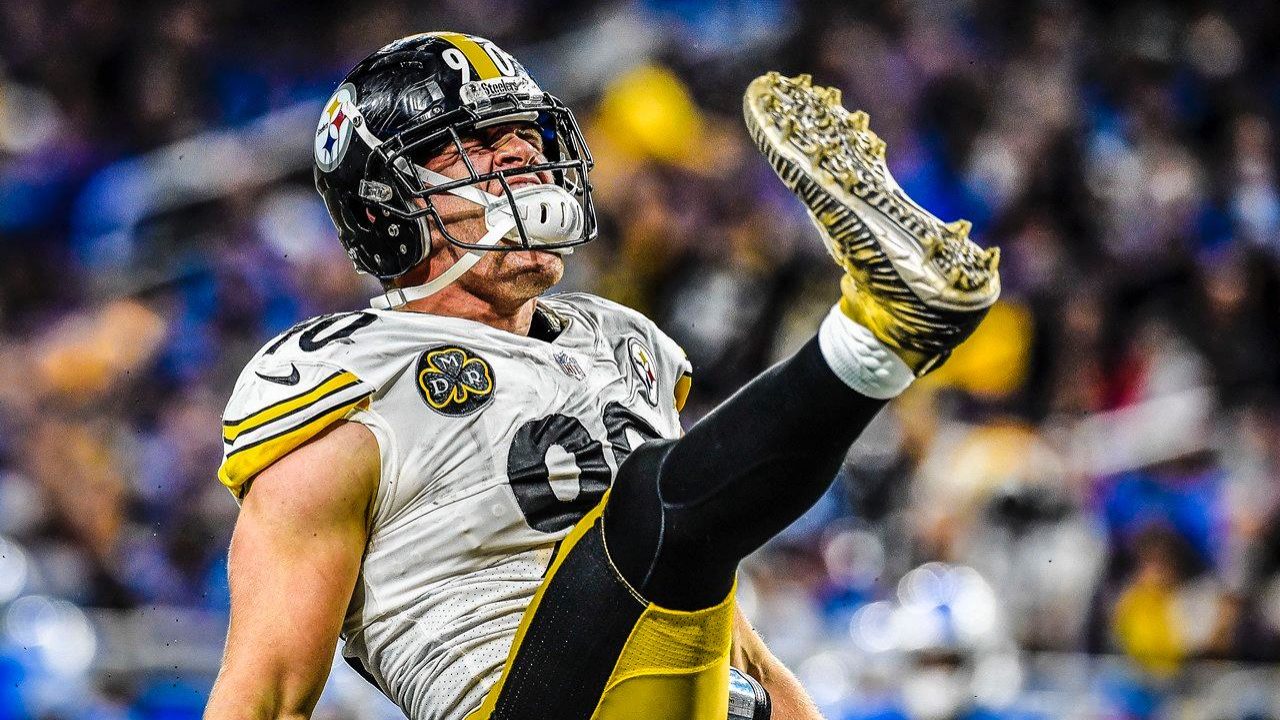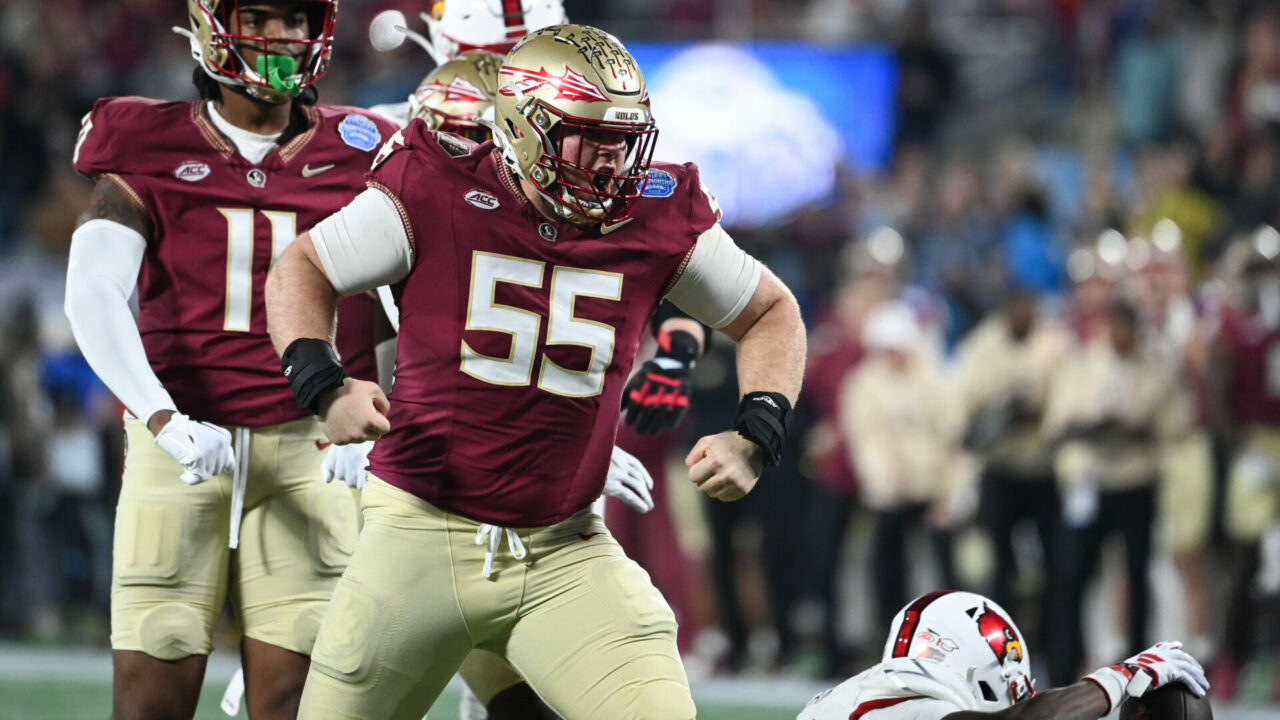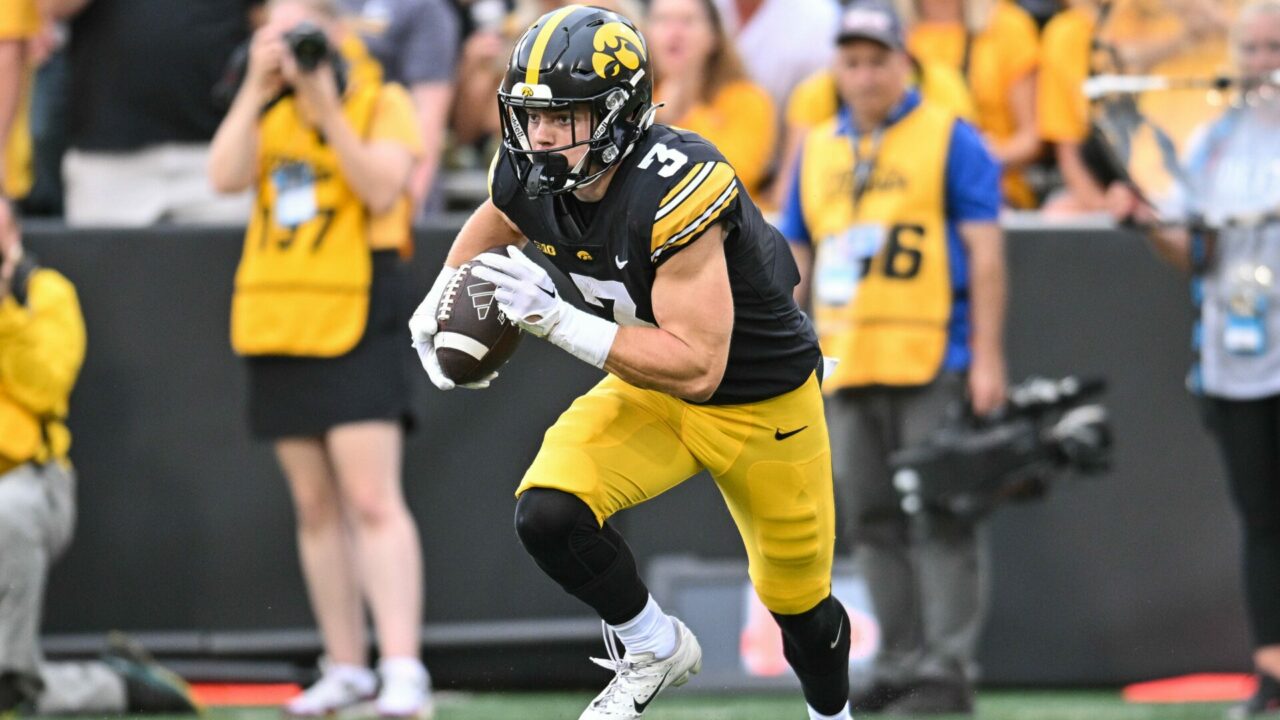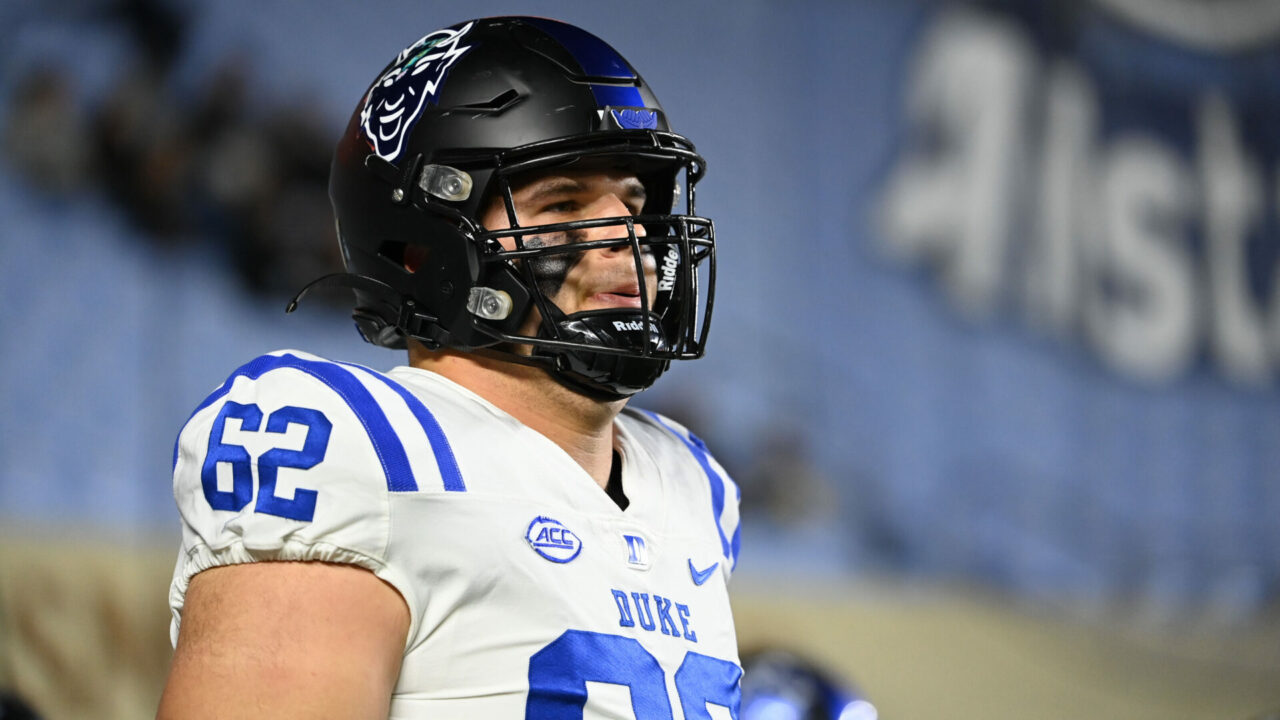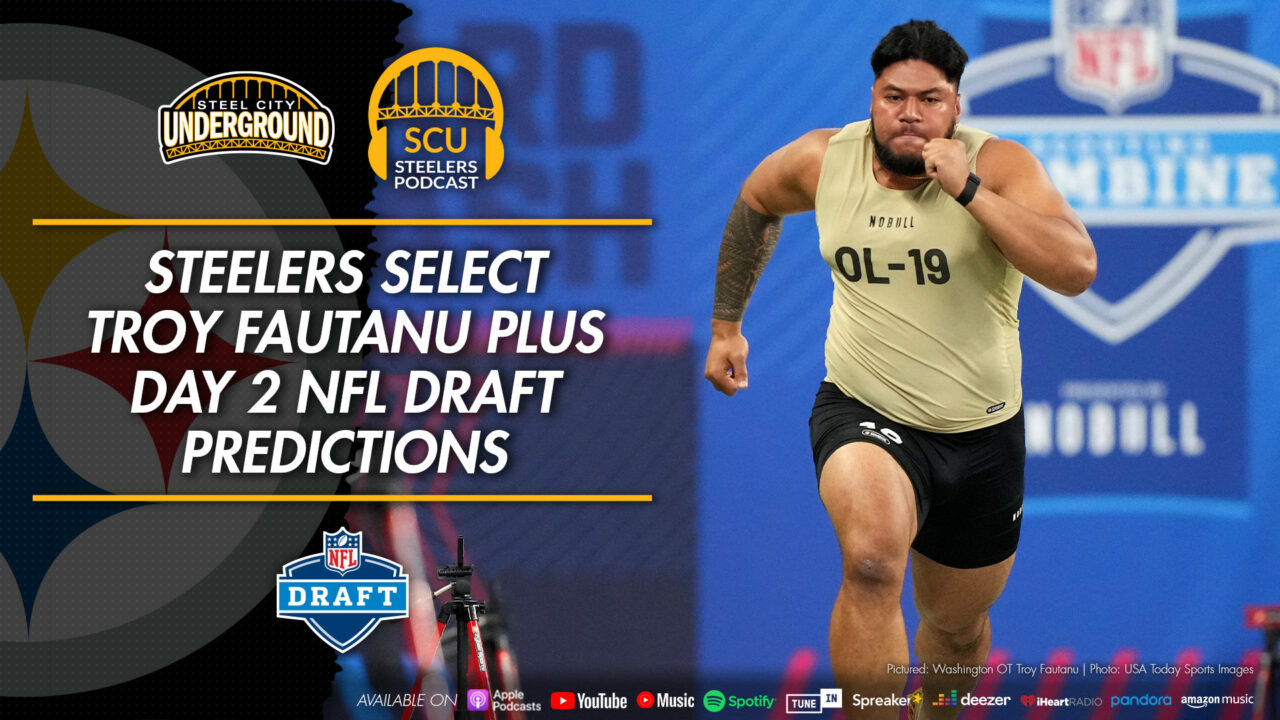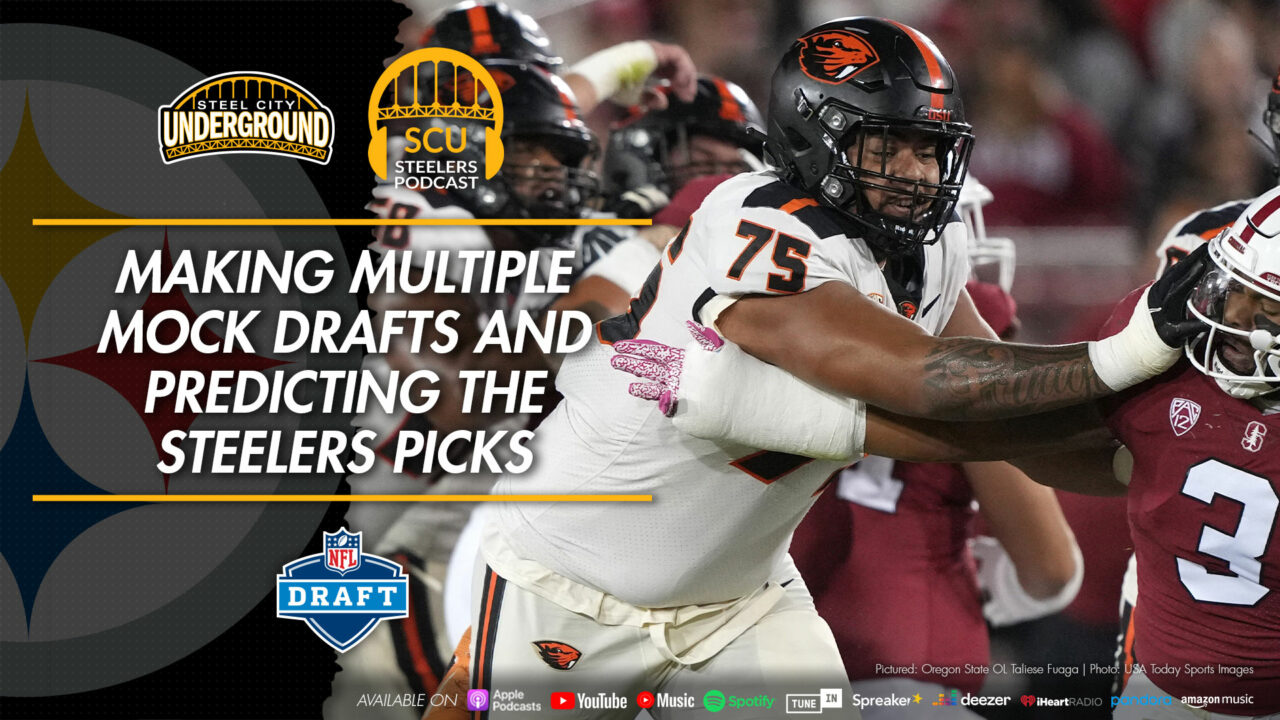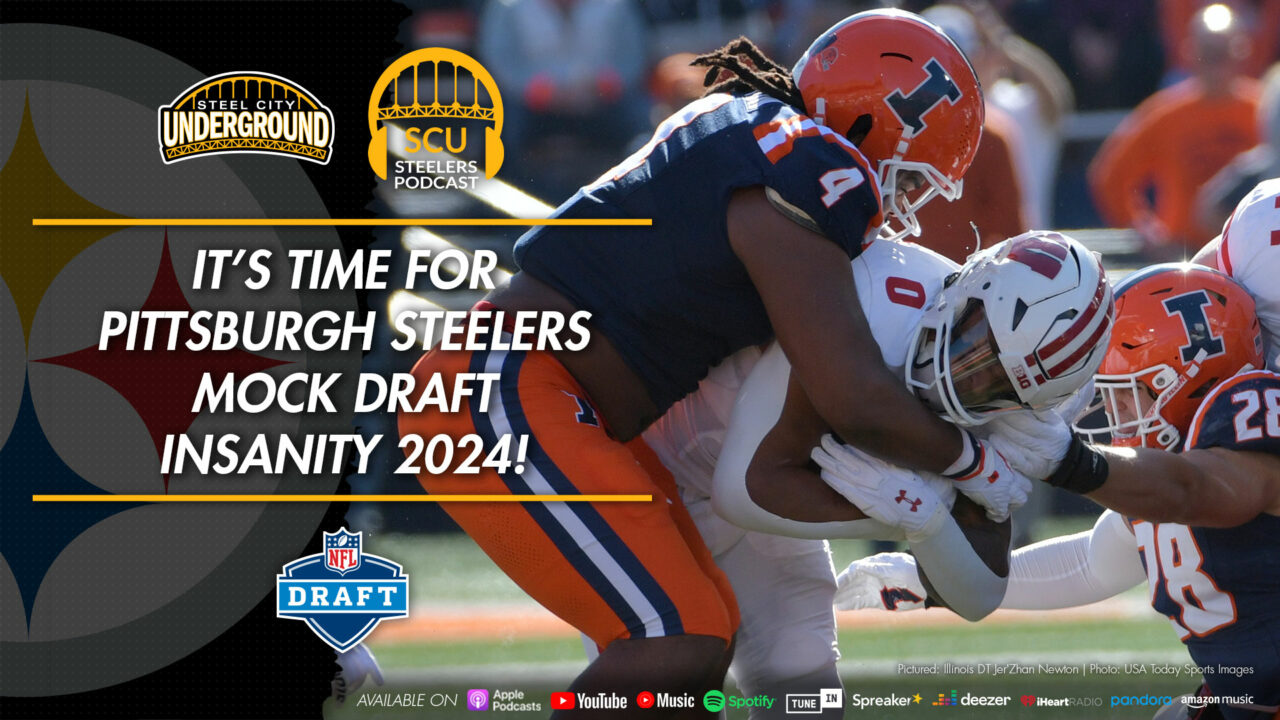Rookie Report Card: Handing out the Steelers’ 2017 Grades
With the Pittsburgh Steelers headed into post-season play, Steel City Underground will be looking back at the 2017 Draft Class and how the picks Pittsburgh made had an effect on their season and future with our Rookie Report Card series.
After revisiting the entire 2017 Draft Class of the Pittsburgh Steelers and taking a look at the early post-draft thoughts from May, we move on to handing out the actual grades to the seven players the Steelers held onto this season. Two grades will be given to each player based on the following criteria: one for performance on the field; another for impact on the success of the team during their debut season.
Players who performed
T.J. Watt
The younger brother of J.J. Watt and Derek Watt, T.J. has become a more immediately impactful player than many draft analysts projected. His NFL Draft profile stated that Watt, after starting as a tight end at Wisconsin and a right knee injury, his return as a reserve linebacker wasn’t very impressive. In 2016, Watt secured a starting position, garnering second-team Associated Press All-American and first-team All-Big Ten honors with 63 tackles, 15.5 for a loss, and 11.5 sacks. The profile listed his weaknesses in this manner:
Short strider who lacks explosion out of stance and up the field to bend the edge as a pass rusher. Foot quickness is average and needs to win with technique and great hand play. Won’t generate enough acceleration to crank up speed-to-power rush with consistency…predicted Round 2.
Onfield performance grade: A
Watt saw action in 15 games during the regular season and recorded 54 combined tackles (40 solo), 7.0 sacks, defended 8.0 passes, grabbed one interception and forced one fumble. In his regular-season debut, against the Cleveland Browns (Sept. 10), Watt recorded seven combined tackles, two sacks, and an interception.
Impact on team grade: A
After becoming the first rookie to start for the Steelers at linebacker since Aaron Jones in 1988, Watt replaced James Harrison on the roster and tied Bud Dupree (2014) and LaMarr Woodley (2007) for the Steelers franchise record for most sacks by a rookie when he grabbed his fourth of the season. Watt recorded eight tackles (six solo) and added another sack against the Cleveland Browns to finish the 2017 regular season with a game-high for a Steelers rookie in tackles and a franchise record for most sacks by a rookie (7). Watt helped the Steelers defense to the NFL’s top sack title with 56 on the season.
JuJu Smith-Schuster
Not necessarily considered the cream of the crop at wide receiver in the 2017 Draft, Smith-Schuster was a 12-game starter and second-team All-Pac-12 all-purpose selection as a true freshman before he fought through injuries and time missed during his senior year at the University of Southern California. He still caught 70 passes for 914 yards and ten touchdowns while receiving second-team all-conference recognition from NCAA coaches.
“He has a mom and stepdad who keep him grounded. His passion and enthusiasm are second to none and he absolutely loves football. He came in as a safety and probably could have gone pro as a safety as well if he had stayed there.” – Former USC assistant coach
His NFL Draft Profile said:
Smith-Schuster will get dinged for his lack of speed and separation but he reminds me of Anquan Boldin with his strong hands, physical approach and ability to win the combat catches. JuJu is missing some of the speed traits teams want from their WR1, but he could become a high-volume, possession target with the size to win some 50/50 throws down the field. Teams who have a speed merchant at one spot would be wise to take a look at Smith-Schuster as a physical counterpart. -Lance Zierlein
Onfield performance grade: A
The rookie receiver improved his play week-to-week as he showed the Steelers coaching staff what type of weapon he could be for a Steelers offense that finished the regular season with 4534 receiving yards (283.4 per game) and 29 receiving touchdowns. Playing in 14 games, Smith-Schuster got his first receiving touchdown against the Minnesota Vikings (Sept. 17) and would finish the season with 58 receptions for 917 yards and seven touchdowns.
Impact on team grade: A
Immediately becoming quite the media darling and fan-favorite, Smith-Schuster was named AFC Offensive Player of the Week for his performance against the Detroit Lions – the first time a Steelers rookie earned that honor since Ben Roethlisberger did so (2004). In that game, Smith-Schuster had a 97-yard catch-and-run for a touchdown and recorded seven catches for 193 yards. He was named AFC Special Teams Player of the Week for Week 17 after returning a kickoff against the Cleveland Browns for 96 yards, giving Pittsburgh the lead in a game they’d win, 28-24. It was the first kickoff return for a touchdown in his NFL career and the first by a Steelers player since Antonio Brown returned an 89-yarder in a win over the Tennesse Titans his rookie season (2010). Smith-Schuster was named the Steelers Rookie of the Year by the team and stepped up big with Brown absent in the final game due to injury. Extra props to the kid for his imaginative touchdown celebrations.
https://twitter.com/steelers/status/948583288347570176
James Conner
The cancer-surviving Pitt star running back was the team’s captain who refused to give up and won both the Disney Spirit Award and ACC Brian Piccolo Award after beating cancer while earning first-team all-conference recognition for his 216 carries and 1,092 rushing yards (16 touchdowns) his final season in college. He overcame a torn MCL (in 2015) and was a mid-draft running back option that the Steelers felt would work in their system. Draft analysts saw Conner as more of a physical back who lacked quickness that could limit his role as a pro but built with an inner work ethic that kept him looking for ways to be successful on the field.
His NFL Draft Profile listed some of his weaknesses as follows:
Lacks quick-escape athleticism for sudden shake in open field. All power, no finesse. Early defensive penetration short-circuits his run. Average lateral movement and not desired amount for every-down back… Medical concerns will continue to follow him.
Onfield performance grade: C
Conner played in 14 games in his debut season in the NFL, recording 32 carries for 144 yards and a 4.5 yard-per-rush average. Unfortunately, Conner dealt with injury – something he was profiled to be prone to – and was placed on injured reserve. Due to the way the Steelers utilized him in their offensive system, it was hard for Conner to be much more than average his rookie season.
Impact on team grade: C
When Conner did play, he was a nice compliment to the patient, dance-like mover and shaker that teammate Le’Veon Bell is. The injury situation hurt Conner, even more, when the Steelers brought in free agent Stevan Ridley, who was pivotal in the final game of the season, and slid Fitzgerald Toussaint into a spot closer to the top of the depth chart as well. Conner did help the Steelers offense earn 1,667 rushing yards (20th in the league).
Conner gets at least an average grade in this category, however, because he helped the team in other ways – namely image. Conner was an early fan favorite and his jersey was highly sought-after. That he was a hometown ‘boy’ helped, but his infectious personality and seeming willingness to be open to fan interaction helped the Steelers as an organization. There is always room for players who may not be the starter showing the city and fan base love.
Players who did not perform (no grade)
Joshua Dobbs
The aerospace engineering major was considered one of the most intelligent and likable players in college football entering the 2017 NFL Draft. At Tennessee, Dobbs recorded 2,946 passing yards and 27 touchdowns and added 831 yards and 12 scores in the rushing game. Dobbs was considered quick at getting through his progressions and known for having a good eye and deep pass ability, but how that’d translate into the pro game was up in the air despite good mental toughness and game knowledge. The Steelers were looking for a mid-draft quarterback that could alleviate some of what ailed them when Jones was forced into games due to injuries to Roethlisberger.
Dobb’s NFL Draft Profile listed his weaknesses and concerns as such:
Below average delivery balance affects his accuracy and ball placement. Footwork is uneven and causes him to throw from unbalanced platform too often. Throwing motion causes him to push some throws. Floats the deep out allowing defenders to close out his passing windows. Decision making not where he needs it to be. Can’t always get away from poor looks once he’s made his mind up pre-snap.
Everyone knew that Dobbs would enter training camp competing not with Ben Roethlisberger but Zack Mettenberger and Landry Jones at quarterback. By the end of camp, it was clear that Jones had better all-around stats (even if fans didn’t believe it) and real-game experience. Dobbs, who saw action during the preseason, saw none during the regular season. If Dobbs is to have a future in Pittsburgh, he’ll have to show that he can get the ball out quicker, read defenses quicker and not dart out of the pocket at the first sign of danger – all things he could not control well during the preseason games.
Cameron Sutton
Sutton started every game at Tennessee until a fractured ankle sidelined him his first season. He would go on to earn All-American honors his junior season for punt return duties but it was his sophomore season that helped solidify the type of defender Sutton could be. He led the Vols with 16 passes defended that season and added three interceptions and 13 pass breakups. Sutton was the first freshman to return an interception for a touchdown (in 2013) since Eric Berry did so in 2007. Sutton allowed just three touchdowns during his college career.
With Artie Burns, William Gay, Joe Haden, Coty Sensabaugh, Mike Hilton and fellow rookie Brian Allen all on the roster, Sutton was given the equivalent of a pro redshirt season. He played in just five games for the Steelers in 2017 and recorded four tackles and one pass defense. It wouldn’t be fair to assess Sutton a grade since there is little evidence to show that he may or may not be a future starter or positional player.
Brian Allen
Similar to Sutton, Allen was given a redshirt season for the most part by the Steelers. One of the biggest concerns by draft scout Lance Zierlein was that Allen was “nowhere near ready to play NFL football.” The Steelers must have seen that as the case, so they allowed the young defensive back who’d switched from receiver in college at Utah to earn some special teams snaps instead of playing in the defensive backfield.
(Allen) lacks smooth feet and hips in coverage, a feel for routes and is below average playing the deep ball. His issues as a tackler make it unlikely a team would trust him to move to safety. However, his elite size, speed and length are sure to garner attention and he does flash some potential as a bump-and-run corner. Allen could be a late-round pick who is stashed on a practice squad while a team tries to improve his technique.
If learning to tackle and make the hit was an issue for draft scouts, giving Allen a year to pick things up and show what he may offer in the future was the right move to make. They didn’t dare put him on the field if he were to do what he did in 2016 with the Utes when he allowed 21.7 yards per completion.
Keion Adams
The Western Michigan athlete who played three sports in high school started in five games as a true freshman and came alive during his junior year, recording 41 tackles and 5.5 sacks. His senior season, Adams lead the WMU Broncos with 18 tackles for a loss and 7.5 sacks. His athletic ability wasn’t in question. With a basketball background giving him extra ‘hop’ and vertical ability, Adams was projected to be a late-draft pick that could turn into a closing-burst, edge rusher that had the ability to close on rushers and hang with tight ends breaking to the center of the field.
An elusive pass rusher who wins with athleticism and foot quickness, but who may lack the size and length to be considered an every-down edge player in a 3-4 front. Adams has pursuit quickness around the field and can be very disruptive when allowed to shoot gaps against the run, but he will have to prove he can set a strong edge and hold his ground at the point of attack if he wants to become anything more than a situational rusher.
Adams would earn a spot with the Steelers only to suffer a shoulder injury that would force him onto injured reserve in August and cut short his 2017 season. Whether he’ll make it to training camp remains to be seen, but he may be a project Pittsburgh is willing to take on again during the offseason.
Overall Draft Grade
The Steelers nailed the 2017 Draft by grabbing Watt and Smith-Schuster for sure. Conner has nice upside, as does Dobbs. Sutton, Allen and Adams all look to be guys the Steelers will test before a final decision is made, and that won’t be until the offseason. The Steelers took a chance drafting Colin Holba (the long-snapper) and watched him secure a spot with the Jacksonville Jaguars. After the in-depth look back we took in Part One and Part Two of our Rookie Report Card series, the Steelers’ final overall draft grade has to be based on the guys they gave opportunities to – and that evens out to a solid B.
There is little doubt that, as the next draft season rolls around, Pittsburgh will once again be looking for those diamonds in the rough. Meanwhile, they’ll bank on Watt and Smith-Schuster helping them make a run for another Super Bowl berth in 2017.
